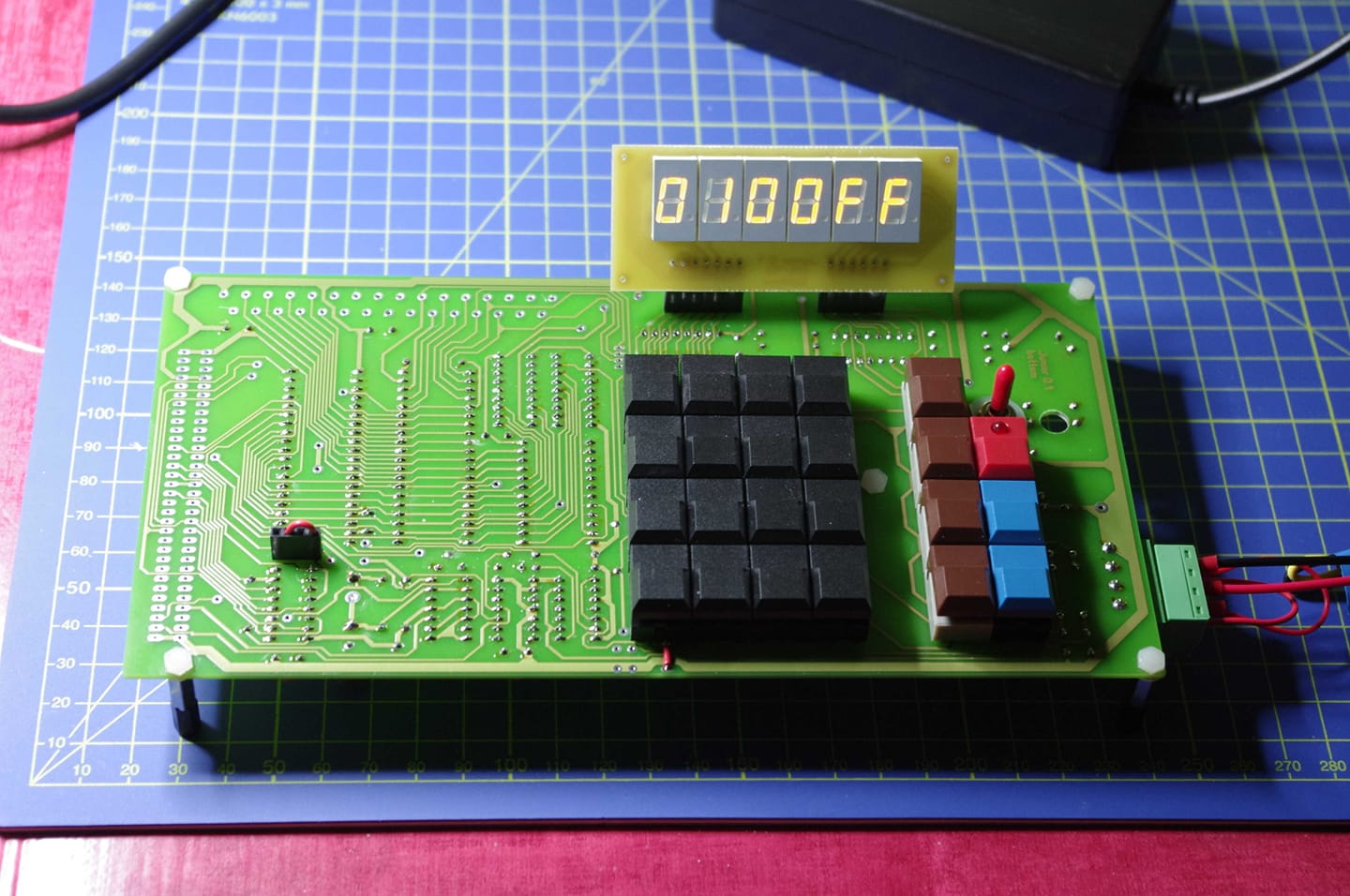The design of the Elektor Junior is well documented in the Elektor articles, books and other articles like the KIM Kenner. In many languages, the archive here is as complete as possible, but you could see some pieces of information in only one language section. The hardware components for the most part are not exotic, especially for the time of publication.
The software in the form of (sources of) the ROMs and applications such as Microsoft Basic and even Operating systems like OS65DV3 is also easy to find.
So with all this information available it is no surprise to see modern versions of the Junior. Some try to stay as close to the original design, others just take the ideas and implement it in a more modern an d convenient way.
Some obstacles in building a Junior are:
- the original PCB’s are only available as low quality magazine articles quality. And even then be careful, the original article mixed up front an back!
- the EPROM for the Junior monitor is a 2708 UV EPROM. A very old hard to get part, hard to program and requiring power supplies like -5V and +12V besides to usual +5V.
- the expansion card used a 82S33 PROM for the address decoding. Also an obsolete part and hard to program.
What designers can do:
- design the PCB’s again. Kicad e.g.
- replace the 2708 with an EPROM like the 2716 or bigger or an EEPROM like the 28C16 or bigger
- use a GAL or discrete logic for the 82S33 on the expansion board
- use a modern SRAM IC and increase RAM memory a lot
- modify the address decoding to fit the modern ROM and RAM
- obtain parts like the 6502, 6532 and 6522
- replace the hard to get 1 MHz crystal with a can oscillator
- simplify the power to +5V
Here are some examples of builds:
- Junior by Philippe Roca
- Junior Computer Replica by laurent-fr
- Junior PCBs by Werner Beukes
- Junior revival Bram Prosman
- Philippe Roehr on KB9 and OS65DV3.3
- Junior Computer ][

